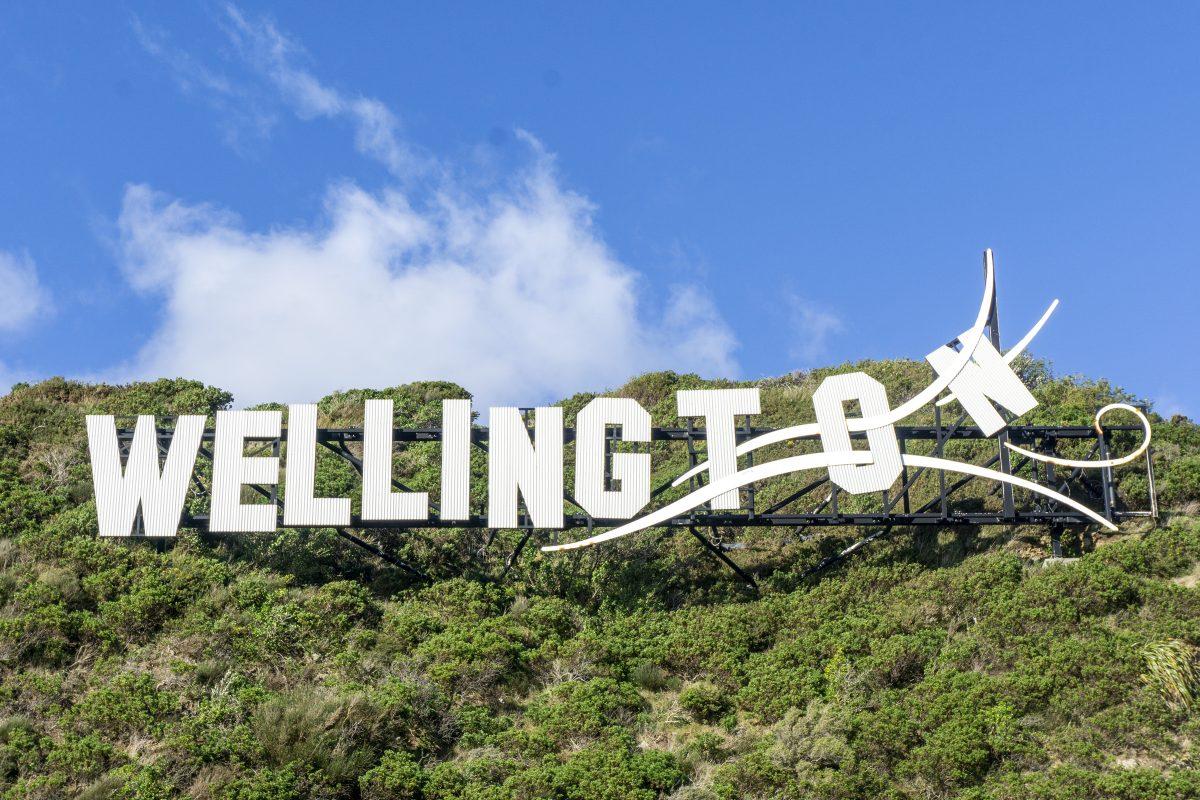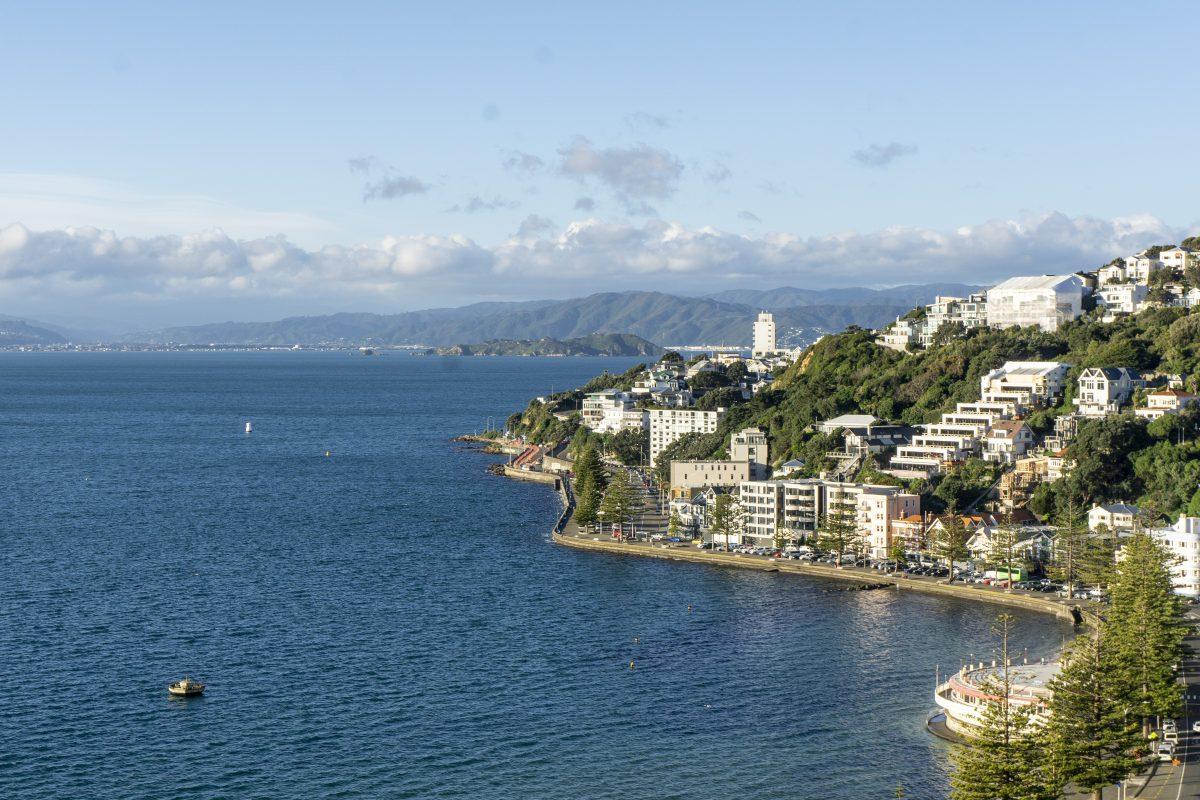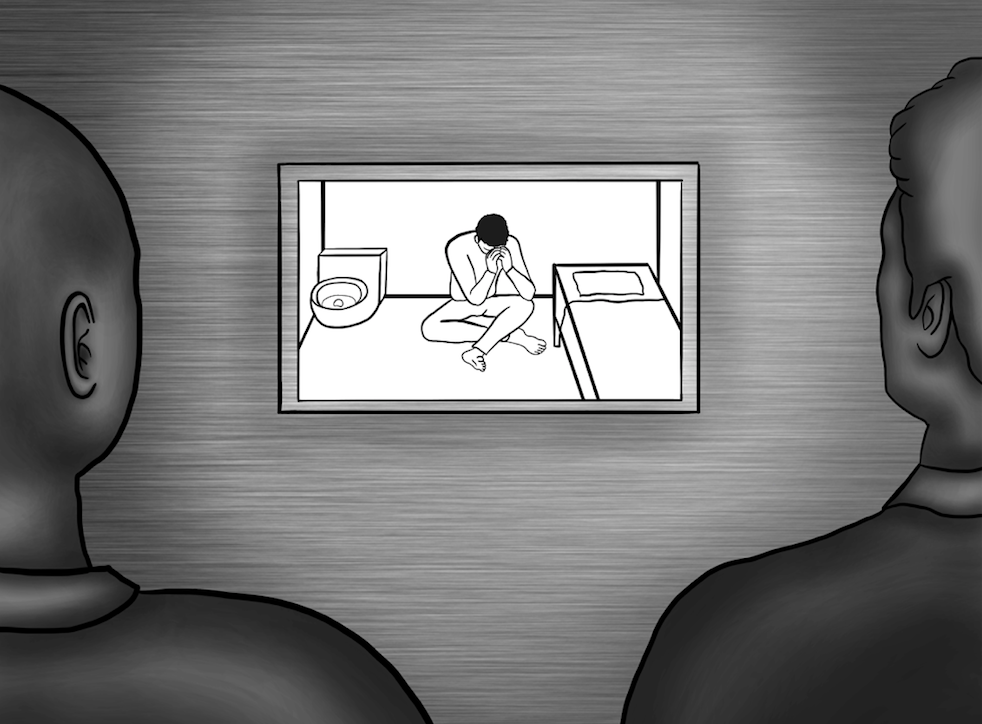“You can’t beat Wellington on a good day” is considered a common saying throughout New Zealand’s capital. With rolling green hills, beautiful blue bays and colorful houses scattered high and low, the sights alone can help you understand why.
The country of New Zealand consists of two main islands, the North Island and the South Island, and a small island at the very bottom called Stewart Island. The one most traveled to, however, is the North Island, where Wellington is located; a coastal city nestled in on its southern tip.
The Wellington International Airport is located right along the coast, next to a quaint little beach within the suburb of Lyall Bay. The descent into the city reveals an unobstructed view of the city skyline and the ant-sized surfers and dogs playing on the nearby shoreline.
The strong northerly and southerly winds that pass through the city year-round help to solidify this capital’s nickname of ‘Windy Wellington.’ Usually these winds makes a visitor’s descent a very bumpy one, but upon my arrival to this coastal city I was met with beautiful sunshine and only a slight wisp of wind. The weather often resembled Oregon’s during my stay; bright, sunny and cloudless one minute, and stormy and windy the next.
Despite visiting during New Zealand’s winter months, the hustle and bustle within Wellington was always present. The wind and rain had no effect on the spirits of the people on the streets or in the pubs.
New Zealand is somewhat hidden to the eyes of the world. Its known presence among us is sometimes so limited that it’s often left off of world maps – IKEA made this mistake as recently as February 2019. A little more than half the size of California, its small size causes it to be lost in the looming shadow of its neighboring country of Australia.
But don’t let its size fool you – the city of Wellington alone shows how much the country has to offer (and it’s much more than the filming site of Lord of the Rings).
Although New Zealand is tucked away in the corner of the world map, it isn’t cut off from the rest of the world. Despite not being as up-to-date with technology as the U.S. and other developed countries, the small islands of New Zealand are not completely behind with modern technologies, either. Motor vehicles, cellphones, internet, medical equipment, smart watches and even electric scooters all exist in Wellington and many other populated cities throughout the country.
The reason for this misconception might have been due to New Zealand’s rural atmosphere and isolation. Almost 14% of New Zealand is considered to be rural and remote according to World Development Indicators’ survey in 2016 of comparable statistics. These areas still don’t have reliable phone coverage or internet connection today. Because of its size and distance from most countries, new and developing technologies didn’t tend to reach the country until years had already passed. However, in comparison to other countries in today’s modern world, the percentage of the rural population is quite average and even lower than most; the United Kingdom, for example, had a rural population percentage of a little more than 17% in 2016.
Now that modern technologies have firmly taken ahold of the world, new technologies such as computers and televisions as well as everyday popular culture like musical artists and films make it to the populated parts New Zealand almost instantly. Local theaters within larger cities like Wellington provide an easy avenue for the performing arts to be open to the public.
Wandering throughout the city’s Central Business District (CBD), or downtown area, it feels as though you have stumbled upon a weird combination of old, Victorian architecture mixed with new, contemporary buildings that sit upon slopes, hills and shores.
One building that stood out in particular was a Burger King that resided within an old Bank of New Zealand. The red, blue and yellow Burger King sign clashes with the building it is attached to – a white, Victorian-style building built over a hundred years ago. This building sat within the epicenter of an area locally known as the Golden Mile, a popular section of the CBD that’s known for its abundance of shops, restaurants, cafes and pubs.
The Golden Mile is visibly more fast-paced than the rest of Wellington. Its nickname is likely due to how much money and time are spent throughout these streets. Office workers, students and tourists alike fill the streets and shops during all hours of the day. Global companies and brands such as Starbucks and Lululemon intermingle with New Zealand-based ones like Mirrou, a clothing store, and Mecca, a high-end makeup shop.
Although I had been to this area as a child visiting my father’s home country, I was still surprised by how much life and energy radiated from this section of the city. Many students often come here with friends after school to grab a quick after-school snack, or a drink at one of the many pubs for those attending university.
The bus system in Wellington proved itself to be a reliable source of transportation and its vehicles were always as clean as could be. Bus lines linking every suburb to the CBD meant access to its shops and restaurants were available to everyone.
Having such open access to the city’s center allows the energy of the area to always remain high. Whether it is 7 a.m. or midnight, the Golden Mile is full of lively chatter and exchanges. Even with cloudy nights and rain-filled streets, the energy was surprisingly amplified. The radiant street lights and signs managed to pop out even more within the streets’ shimmering reflections.
One of the greatest things about this city is how you can go from a modern, business atmosphere full of busy people and streets to a completely tranquil environment filled with beautiful wildlife and coastal, hilly views; both can be reached within a 15-minute drive.
Throughout the hills of Wellington are thousands of colorful homes. The little dots of blue, yellow and red stand out from the hills’ beautiful greenery. Driving throughout the hills and flatlands, the variety of homes and architecture differ greatly. Homes built within the last couple of decades reflect the contemporary style with many appearing to be uniform and sleek in appearance. In contrast, houses that were built in the 20th century reflect the style of architecture at the time: simple, practical and quaint.
Many homes that were built in the early 1900s are reminiscent of English cottages, a glimpse of the United Kingdom’s influence that began with New Zealand’s official founding in 1840 and ended in 1907. The streets of these neighborhood areas are usually narrow, only allowing one car to pass through at a time. These narrows roads were due to limited space between each property; when the original land was sold to its owner, the only space they planned for was for footpaths, since cars had yet to be a common possession. Because the property was privately owned by its citizens, the government had no power to create wider roads. Nevertheless, these skinny roads have no effect on the atmosphere of any neighborhood. Every resident seems to have learned and adapted to their streets’ condition, continuing to live their everyday life and activities throughout their neighborhood streets.
The most common establishment to find on the corner of many of these streets are the neighborhood dairy shops: corner stores known for their delicious ice cream. These beloved dairies usually display the iconic advert for “Tip Top Ice Cream.” One of their most popular flavors is “Hokey Pokey,” a vanilla ice cream with pieces of honeycomb toffee, a classic for many locals. Although these local dairies aren’t as popular as they were back in the 20th century, locals still cherish these markets for their convenience and their childhood memories.
Over the years, the dairy shops have become weathered from their year-round beatings by the northerly and southerly winds. The northerly winds tend to come during the summers and springs of Wellington, bringing warmer breezes from the equator. In contrast, the southerly winds blow up from the colder regions, tending to come up during the fall and winter seasons. Both of these winds combined results in a year-round assault on anything it touches, aiding this windy city’s reputation and showing which buildings, like the dairy shops, have been around the longest due to their rough appearances.
During the small amount of time there was to explore this city, I visited art museums, saw an opera, competed in an axe-throwing competition, attended a jazz concert, went on a shopping spree, visited a bird sanctuary, befriended a sheep, discovered a board game cafe and ate a seemingly unprecedented amount of meat pies (one of New Zealand’s specialties). It would be quite an understatement to say there is a lot to do in Wellington.
Wellington exceeds expectations. Its public transportation made traveling a breeze, its genuinely friendly locals gave a sense of belonging and the laid-back culture created a well-balanced atmosphere. From the wide array of local foods and drinks to the beautiful scenery and wildlife that inhabited the land, it’s easy to see the appeal of this little big country. It was a bittersweet goodbye boarding my return flight to California, but I knew that the windy city of Wellington would always be there to welcome me home.
Oriental Bay from a lookout point on Mount Victoria in Wellington, New Zealand. Photograph by Julia Page.









![[Photo Courtesy of the Lara Family]
Ruben embraces his beloved childhood goat, Katrina.](https://ethos.dailyemerald.com/wp-content/uploads/2025/05/katrina-1-1060x1200.jpg)


